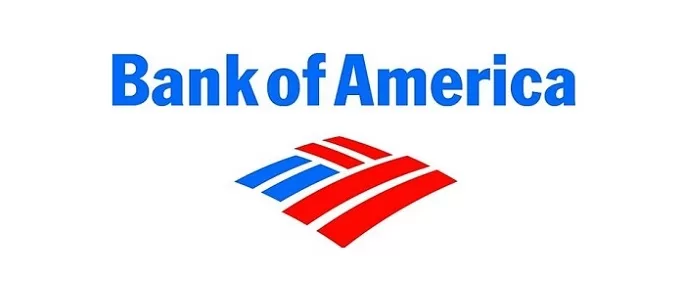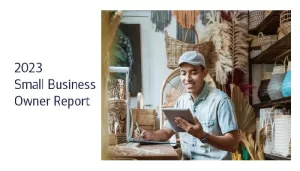88% of Small Business Owners Say Inflation Is Impacting Their Business, According to Bank of America Small Business Owner Report

A majority of small business owners report that inflation and supply chain disruptions are impacting their businesses, according to the Bank of America 2022 Small Business Owner Report. The survey of more than 1,000 business owners across the country—now in its 10th year—found that business owners are navigating operational challenges including price increases and loss of customers. Despite these difficulties, the business outlook remains strong, with 64% anticipating their revenue will increase in the year ahead.
Conducted in March and April, the survey found:
- 88% of business owners say inflation is currently impacting their business
- 76% say supply chain issues are impacting their business
- 31% are confident the national economy will improve, down from 50% in 2021
- 39% are confident their local economy will improve, down from 56% in 2021
“Small business owners are betting on their businesses and seeking opportunities for expansion, despite concerns about the economy,” said Sharon Miller, President of Small Business and Head of Specialty Banking and Lending at Bank of America. “While facing a highly challenging environment, entrepreneurs are demonstrating resilience and adaptability as they focus on the operational and strategic decisions that directly impact their customers and employees.”
Economic Concerns and Recovery
Business owners are primarily concerned about key economic factors including inflation (80%), commodities prices (75%) and supply chain disruptions (64%), and this anxiety is dampening their overall outlook. Concerns over commodities prices, international affairs (61%) and interest rates (57%) all rose sharply this spring, while concerns over health care costs (57%) dipped to their lowest levels in the history of the SBOR.
While new challenges loom, entrepreneurs reported a steady recovery from the initial impacts of the pandemic. More than three-in-five business owners (62%) feel their business has fully or partially recovered from the pandemic, and nearly half (48%) cited increased consumer spending over the past year as a key driver in their recovery. Additionally, 70% of business owners plan to seek financing for their business in the year ahead, and 26% plan to hire, the highest percentage since fall 2018.
Inflation, Supply Chain and Labor Impact Operations
Most entrepreneurs say they’ve raised prices to sustain their business due to the impact of inflation and supply chain disruptions:
- Nearly nine out of 10 (88%) business owners are feeling the impact of inflation, leading them to: raise prices (68%); reevaluate cash flow and spending (34%); lose sales (31%)
- Three-quarters (76%) of business owners reported supply chain issues are impacting their business operations, causing them to: raise prices (58%); face difficulties sourcing products and supplies (49%); delay delivery of goods and services (43%)
- Owners are also experiencing labor shortages, with 41% reporting impacts to their business, including the need for them to work more hours and difficulty filling open positions.
Interest in Emerging Technologies
Looking to the future, entrepreneurs believe new technologies will be critical to business growth and risk reduction. Business owners believe that cybersecurity platforms (57%), 5G (50%) and automation (39%) will be important for business success in the next decade. Business owners are also preparing to adapt their sales strategies to a digital-first world and, in the decade ahead, 44% plan to prioritize digital sales over brick and mortar.
Meanwhile, 70% of business owners have adopted new digital tools and strategies for their business in the past 12 months, including more business banking online or via mobile apps (52%), and accepting more forms of cashless payments (43%).
A Decade of Change and Commitment
This year marks the 10th anniversary of the SBOR. Over the last decade, business owners have operated in a challenging but rewarding business environment. A majority (72%) feel business ownership has become more difficult over the past decade, largely due to a dynamic and more competitive business landscape. Despite which, nearly half (46%) of entrepreneurs say they have been able to spend more time with their family, and 37% have set aside more personal wellness time, compared to a decade ago. Many entrepreneurs today (46%) are even in business with their spouse or partner, with the vast majority (96%) enjoying running their business together.
For an in-depth look at the insights of the nation’s small business owners, please read the full Bank of America 2022 Small Business Owner Report.
Providing a Business Advantage to Small Business Owners
Bank of America provides advice, solutions, access to capital and dedicated support to meet the unique needs of our 11 million business owner clients. According to the FDIC, Bank of America maintained its position as the nation’s top small business lender at the end of 2021, with $34.8 billion in total outstanding small business loans (defined as business loans in original amounts of $1 million and under).
Bank of America 2022 Small Business Owner Report
Ipsos Public Affairs conducted the Bank of America 2022 Small Business Owner Report survey online between March 22 and May 1, 2022 using a pre-recruited online sample of small business owners.
Ipsos contacted a national sample of 1,037 small business owners in the United States with annual revenue between $100,000 and $4,999,999 and employing between two and 99 employees. In addition, approximately 250 small business owners were surveyed in each of ten target markets: Atlanta, Boston, Chicago, Dallas, Houston, Los Angeles, Miami, New York, San Francisco and Washington, D.C. The final results for the national and designated market area segments were weighted to national benchmark standards for size, revenue and region.
Prior to 2016, previous waves of the Small Business Owner Report survey were conducted by telephone and while best efforts were made to replicate processes, differences in sample, weighting and method suggests caution when making direct statistical comparisons of the results from pre-2016 and post-2016.
Source: Bank of America















